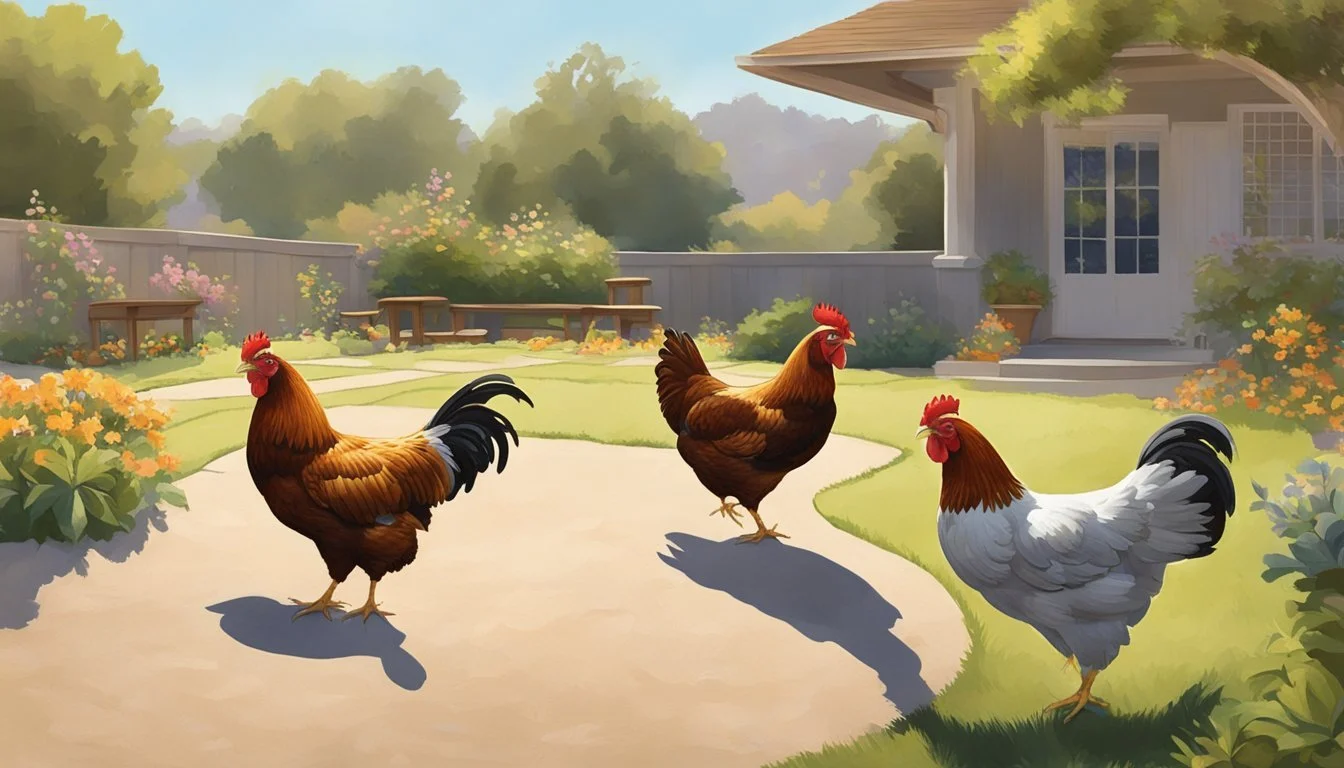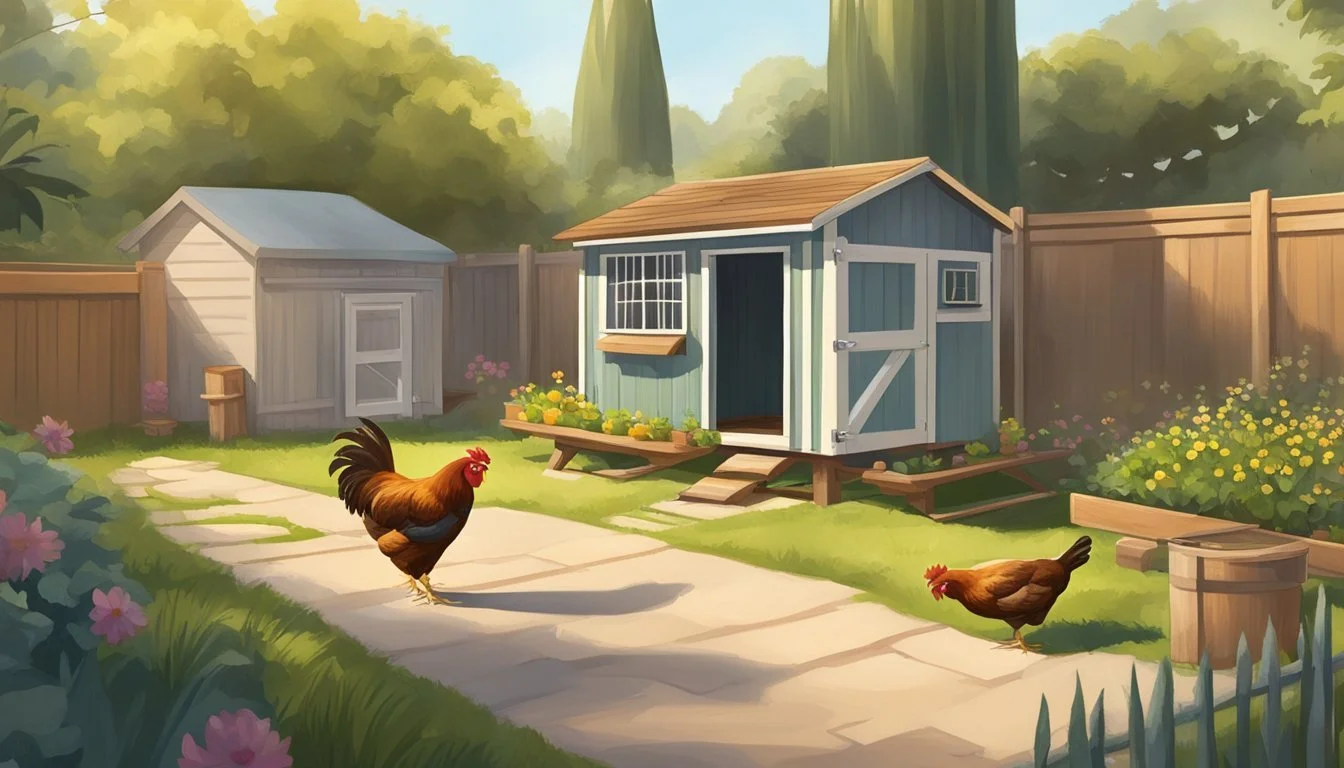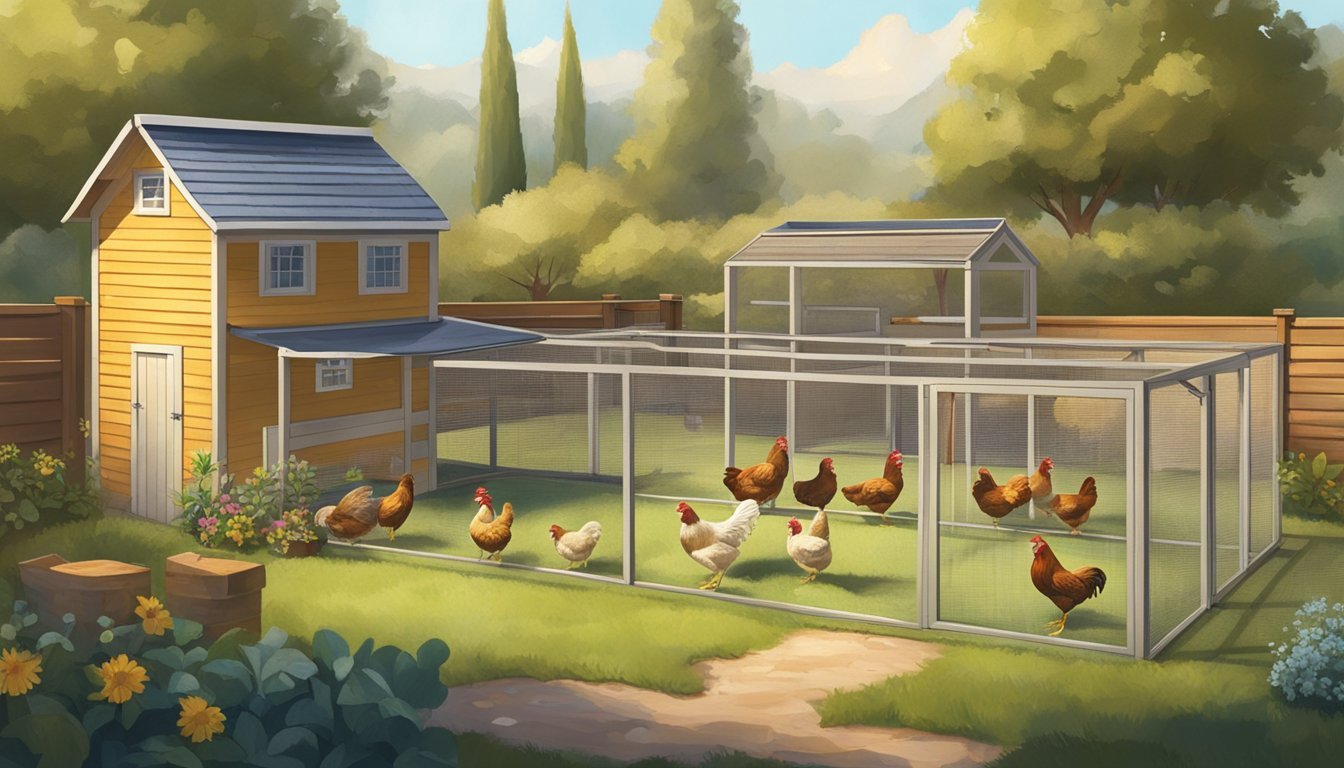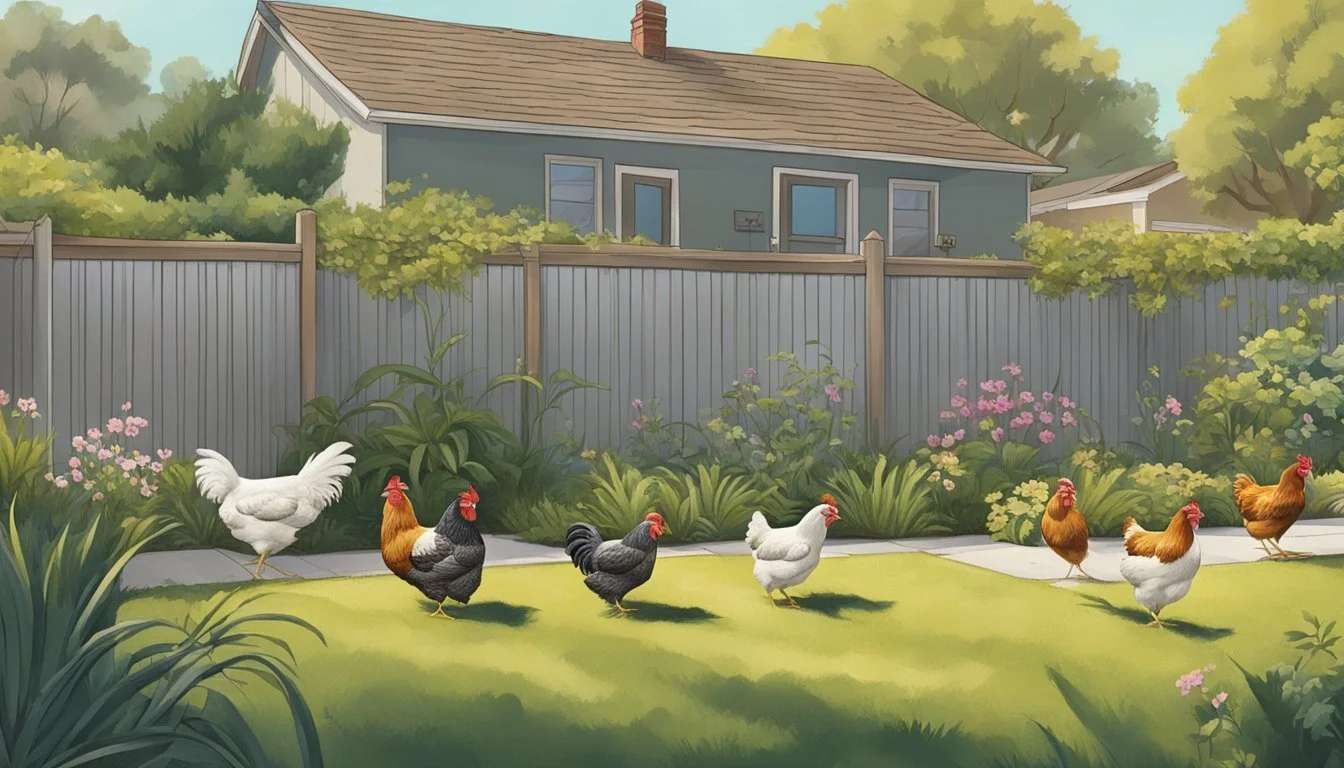Keeping Backyard Chickens in Santa Ana, CA
Essential Guidelines for Urban Poultry Farming
Raising backyard chickens has become an increasingly popular hobby in urban and suburban areas, allowing homeowners to enjoy fresh eggs and the benefits of natural pest control. Santa Ana, nestled in the heart of Orange County, California, is no exception to this trend. Residents are turning toward sustainable practices by incorporating poultry into their backyards.
However, for those living in Santa Ana considering this practice, understanding the city's specific regulations on keeping backyard chickens is crucial. The municipal code outlines clear guidelines regarding the number of chickens allowed, coop construction requirements, and the necessary distance from neighboring dwellings to maintain harmony within the community. These rules ensure that chicken enthusiasts responsibly integrate this activity into Santa Ana's residential areas.
The recent discussions among city officials signal potential changes to existing poultry regulations, reflecting the community's growing interest in urban farming. As such, prospective and current chicken owners in Santa Ana need to stay informed about the latest developments to align their backyard chicken endeavors with the current legal framework.
Understanding Local Chicken Laws in Santa Ana
Before establishing a backyard chicken coop in Santa Ana, California, residents must navigate through local ordinances and permit requirements to ensure compliance with city and state laws.
Legal Considerations for Backyard Chickens
In Santa Ana, the local municipal code outlines specific regulations that residents must follow when keeping backyard chickens. These chicken laws are in place to maintain public health and nuisance control within the city. Key considerations include:
Distance Requirements: Coops or enclosures must be situated at least a certain distance from neighboring residences or businesses to minimize disturbances.
Number of Chickens: There is a limit to the number of chickens one can keep, typically to prevent overcrowding and reduce the risk of noise and odors.
Roosters: The keeping of roosters may be prohibited or restricted due to their potential for noise.
Sanitation: Regulations regarding the cleanliness and maintenance of chicken enclosures are in place to prevent the attraction of pests and the spread of disease.
Violation Consequences: Non-compliance with these ordinances may result in fines or other penalties as dictated by the local government.
Permit Process for Keeping Poultry
To keep backyard chickens legally in Santa Ana, residents may be required to obtain a permit or special permit. The permitting process includes several steps:
Application Submission: Residents must complete and submit an application for keeping poultry to the appropriate city department.
Property Inspection: In some cases, the city may conduct an inspection of the property to ensure it meets the specified requirements for keeping chickens.
Neighbor Approval: Neighboring residents might need to be informed or give consent, particularly in cases where the coop is close to property lines.
Fee Payment: A fee may be associated with the permit application, which contributes to the administrative costs of processing and enforcing chicken regulations.
Compliance with state laws is also necessary, as they work in conjunction with local ordinances to regulate the keeping of backyard poultry. Adhering to both sets of laws protects owners from potential legal issues and ensures that chicken keeping is safe and enjoyable for everyone involved.
Setting Up Your Chicken Coop
In Santa Ana, CA, setting up a chicken coop requires careful consideration of location, design features, and hygiene to ensure the health and safety of the backyard chickens.
Choosing the Right Location
The right location for a chicken coop is critical for the wellbeing of the chickens. The coop must be placed on your property in compliance with Santa Ana's distance requirement, which states that coops must be set back at least 100 feet from the nearest neighbor's dwelling to avoid nuisances. It is also important to position the coop on high ground to prevent flooding and ensure the area remains dry and clean.
Proximity: Ensure proper distance from property lines.
Elevation: Select high ground or use an elevated structure.
Coop Design and Features
When designing a chicken coop, consider both the chickens' needs and local coop restrictions. The coop should provide adequate space for the number of chickens you intend to keep, typically 2-3 square feet per chicken inside the coop and 8-10 square feet per chicken in the run. Essential features include:
Nesting Boxes: One for every 3-4 hens, filled with clean, soft bedding.
Ventilation: Ample air flow, but no drafts, to maintain a healthy environment.
Security: The structure must be predator-proof with sturdy materials and secure latches.
A well-designed coop and attached run provide chickens with shelter and space to forage.
Maintaining Cleanliness and Hygiene
Maintaining a clean and sanitary coop is non-negotiable for the health of backyard chickens. Regular cleaning prevents the buildup of ammonia and the spread of disease. Implement a schedule that includes:
Daily Maintenance: Remove soiled bedding and refresh water and food.
Weekly Cleaning: Deep clean nesting boxes and check for any signs of pests or damage.
Waste Management: Properly dispose of waste and keep the coop area free of debris.
The coop should be constructed with materials that are easy to clean and resistant to pests.
Caring for Your Flock
Keeping a healthy flock in Santa Ana, CA, necessitates keen attention to their nutritional needs, health care to prevent diseases, and proper reproductive management. This holistic approach ensures the chickens not only survive but thrive, yielding an abundance of fresh eggs.
Feeding and Nutrition
Chickens require a balanced diet comprising grains, proteins, and vitamins. Starter feed is essential for chicks to ensure proper growth, and as they develop into pullets, their diet shifts to layer feed to support egg production. Regular access to clean water and a feeder that minimizes waste is critical. In Santa Ana, it's important to store feed in a way that prevents spoilage due to the region's climate.
Health and Disease Prevention
To prevent disease, keep the coop clean and provide ample space for each chicken to reduce stress and the spread of illness. Regular inspections for lice, mites, and signs of illness such as sour crop are necessary. A chicken's respiratory system is sensitive; thus, proper ventilation in the coop is of utmost importance, as is using heat lamps mindfully to avoid fire hazards.
Reproductive Care
For those with a hatchery, attention to the breeding stock's health is paramount. Choosing robust chicken breeds suited for the local climate contributes to better hatch rates and healthier baby chicks. Implementing a scheduled light source can encourage egg-laying during shorter days. Maintaining a balanced sex ratio in the flock can minimize stress on the hens and optimize egg production.
Chicken Behavior and Social Structure
Chickens exhibit complex social behaviors which are crucial for the harmony and productivity of the flock. Understanding these behaviors is key for successful backyard poultry management in Santa Ana, CA.
Understanding Pecking Order in Hens
Hens establish a clear hierarchical system known as the pecking order. This social structure dictates the access hens have to resources such as food, nesting sites, and dust-bathing areas. At the top of the hierarchy, dominant hens get priority, while those lower in the rank may have to wait their turn. Observing behaviors like pecking, which occurs less frequently towards the top-ranking hens, can help owners identify the structure of their flock’s pecking order.
Top-ranking Hen: Often the first to eat and chooses the best nesting spots.
Lower-ranking Hens: They usually eat last and may exhibit submissive behaviors.
Rooster Dynamics and Their Role
Roosters play a distinct role in the chicken social structure. A rooster typically watches over the hens, facilitating order and protecting the flock from predators. The presence of a rooster can influence the pecking order, often asserting himself as the flock's leader.
Protection: Roosters are vigilant and will alert hens to potential threats.
Order Maintenance: They can intervene in hen disputes, helping to maintain social order.
Understanding these roles and behaviors is crucial for anyone looking to maintain a harmonious backyard flock in Santa Ana, CA.
Managing the Chicken Run and Outdoor Space
In Santa Ana, California, residents are allowed to keep backyard chickens under specific regulations. Effective management of a chicken run and outdoor space is critical to the health and safety of the chickens.
Space Requirements for Free Movement
The size of the chicken run should allow for free movement and exercise, essential for the well-being of backyard chickens. Santa Ana regulations enable up to four chickens per household but disallow roosters. For a flock of this size, a minimum space of 10 square feet per chicken within the run is recommended. This allows them to forage, dust-bathe, and demonstrate natural behaviors without overcrowding.
Minimum Recommended Space per Chicken: 10 sq ft
Max Chickens Allowed: 4
Total Minimum Run Size: 40 sq ft
Protecting Chickens from Predators and Pests
Predator-proofing a chicken run is crucial to safeguard chickens from common predators such as dogs, coyotes, or raccoons, as well as from small animals and pets like cats. The run should be enclosed with sturdy wire mesh extending over the top to prevent aerial attacks from birds of prey and further secured below ground to deter digging animals. It is also important to use hardware cloth instead of chicken wire to protect against smaller predators and rodents, including reptiles that can sneak into coops and runs through larger gaps.
Features for a Predator-Proof Run:
Top Covering: Wire mesh to block aerial predators.
Perimeter Barriers: Hardware cloth underground to prevent digging.
Wire Type: Hardware cloth rather than chicken wire for smaller gaps.
Locks: Secure latches on all coop doors to keep out intelligent predators.
Integration with Your Neighborhood
When keeping backyard chickens in Santa Ana, CA, residents must carefully adhere to city ordinances to ensure harmonious integration with their neighborhood. This involves preventing chickens from becoming a nuisance and proactively maintaining good relations with neighbors.
Preventing Nuisance to Neighbors
Setbacks: One fundamental requirement is the setback regulation, which ensures that chicken coops are placed at least 100 feet away from neighboring residences. This distance helps in mitigating noise and odor that could potentially disturb the neighbors.
Roosters: Santa Ana ordinances prohibit keeping roosters, as their crowing is likely to create disturbances. Thus, residents are advised to have only hens to minimize noise levels.
Property Cleanliness: Regular cleaning of the chicken coop is vital in preventing odor and pest infestations that can affect nearby properties.
Maintaining Good Community Relations
Communication: Engaging in open and transparent communication with neighbors about one's intentions to keep chickens can pave the way for better understanding and fewer conflicts.
Education: Informing neighbors, especially those with children, about the benefits and responsibilities of raising chickens can foster a community spirit and dispel misconceptions.
Compliance with Local Laws: Adhering to all local ordinances related to backyard chickens is essential. For more detailed information on these regulations, residents should visit the official Santa Ana city website or contact local authorities.
Through these methods, residents can ensure that their hobby of keeping backyard chickens contributes positively to the neighborhood fabric.
Supplemental Chicken Care Practices
In Santa Ana, CA, maintaining a backyard chicken coop goes beyond basic needs. The city's chicken enthusiasts can enhance their flock's well-being and contribute to ecological sustainability through specific care practices.
Using Bedding and Waste for Composting
Backyard chicken keepers in Santa Ana can utilize bedding materials and chicken waste to create nutrient-rich compost. Pine shavings and straw serve as excellent bedding choices, as they are not only comfortable for chickens but also decompose well. The process involves:
Collecting soiled bedding: Routinely clean the coop and collect the bedding.
Creating compost piles: Combine collected waste and bedding with green garden waste and turn regularly for aeration.
Curing compost: Allow the pile to mature, which can take several months until it's ready to enrich gardens.
Providing Enrichment and Activities
Chickens, being social and intelligent pets, thrive with engagement. Santa Ana's chicken hobbyists should consider:
Pecking toys: Install pecking toys to stimulate foraging behaviors.
Perches and climbing structures: Encourage natural roosting and exercise.
Varied diet: Supplement feed with garden scraps, providing both nutrition and entertainment.
Enrichment ensures both physical health and mental well-being for backyard chickens.
Navigating Challenges of Raising Chickens
In Santa Ana, CA, chicken enthusiasts face hurdles like stringent city ordinances and a lack of immediate resources. Nonetheless, these can be overcome with a well-informed approach and community engagement.
Addressing City Code Amendments and Bans
The city of Santa Ana imposes specific limitations on backyard chickens. Notably:
Residents may own up to four chickens, but roosters are prohibited.
Chicken coops must be situated at least 100 feet from any residential dwelling, which is often impractical in urban settings.
In recent years, there have been changes easing restrictions, such as reducing the required distance from homes. These amendments indicate a more accepting stance, so residents should stay aware of ordinance updates for compliance and avail opportunities.
Consulting Chicken Forums and Local Experts
Utilization of Online Resources:
Forums: BackYard Chickens and similar platforms can be invaluable.
Advice: Read experiences and tips from other Santa Ana residents.
Regulations: Double check any legal information for accuracy.
Engagement with Local Chicken Enthusiasts:
Experts: Seek guidance from those with firsthand experience in the area.
Workshops or meetings: Ideal for in-person learning and support.
Both online forums and local experts serve as critical resources for current and prospective chicken owners navigating the complexities of urban poultry farming in Santa Ana.









